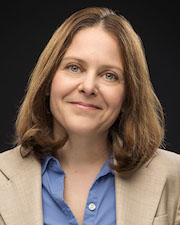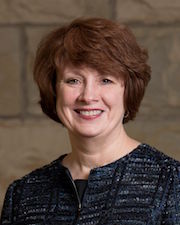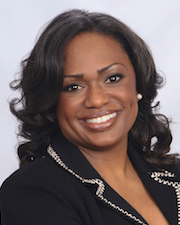Questioning the Calculations |
College Promise Programs | Donate! 


What’s AHEAD Commentary [September 2017]
Administered shortly after the white supremacist rally in Charlottesville, the latest What’s AHEAD poll focused on freedom of speech on college campuses. Below are framing commentary from Dr. Sigal Ben-Porath, Professor at the Penn Graduate School of Education and the author of Free Speech on Campus recently released by University of Pennsylvania Press, and Penn GSE alumni Dr. Brandi Jones (University of Southern California) and Dr. Mary Finger (Seton Hill University).
To join the discussion, please visit our Facebook page: https://www.facebook.com/PennAHEAD
Freedom of Speech on College Campuses
 Sigal Ben-Porath
Sigal Ben-Porath
Professor
Literacy, Culture, and International Education Division
Graduate School of Education
University of Pennsylvania
Author of Free Speech on Campus Published by University of Pennsylvania Press in July 2017
Higher education institutions have been grappling with free speech issues recently more intensely than they have since the late 1960s. As chair of Penn’s Committee on Open Expression I have witnessed and dealt with this matter for the past two years, and I therefore found the views of colleagues as documented by the Penn AHEAD survey significant.
While most respondents agree that their institutions are committed to protecting free speech, our students voice a slightly different perspective, one that we should heed as their leaders and educators. Students tell us that yes, they support free speech and the First Amendment, but surveys reveal that half or more of undergraduates support giving college leaders the power to suppress speech when it is hurtful or harmful.
Contrary to common responses, I do not think we should find this common view alarming. Yes, we need to educate our students about the constitutional and democratic importance of free speech, and to expand their knowledge about the perils of censorship. But at the same time we should listen to what students are telling us: I understand them as saying that our institutions should expand speech rights to oppressed and marginalized groups, and that we should be wary of implementing free speech norms that further silence and harm members of these groups. Leaders in higher education should seize the opportunity to engage with students, their leaders and groups, their clubs and associations; to listen to their vision of free speech, as I have done in the past years through my administrative role; and to consider whether their institution is prepared to face the new landscape of free speech, wielding not only the constitution but also open communication practices, pedagogical tools, and a clear sense of how free speech advances their institutional mission.
 Mary C. Finger, Ed.D
Mary C. Finger, Ed.D
President
Seton Hill University
Over the last few years, institutions of higher education have been host to controversies that demonstrate the issues of upholding academic freedom and free speech on college campuses. Protesting and heckling of controversial speakers; debates about trigger warnings for potentially provocative classroom topics; and discipline of faculty for confrontational comments made on social media illustrate the ongoing challenges to preserving academic freedom. These challenges are heavily influenced by circumstances and environment, institutional leadership and student composition, and politics of the era.
The What’s AHEAD: Key Trends in Higher Education Freedom of Speech on College Campuses survey indicates how college and university administrators think and act as they balance the commitment to academic freedom and free speech with campus safety and a dedication to the particular history and mission of the universities they serve. As we address the responsibility of preserving this basic tenet of higher education, we cannot expect hard and fast rules to guide us, but there are certain principles and presumptions that provide direction. As institutions we stand in favor of the free expression of ideas in the classroom and at the podium – even those that are controversial. Consequently, we work to create environments in which the “heckler’s veto” has no authority.
Standing for free expression, however, does not mean that there are not limits on that expression, and the “fighting words” doctrine provides the main exception. The doctrine of academic freedom and free speech does not extend to those whose words incite violence or harm to another. Finally, not every idea has a right to a podium. As universities we are not in the business of promoting falsehoods. We are not required to allow speakers who argue that, for example, the world is flat, that vaccinations cause autism or that climate change is a hoax.
Even as academic freedom and free speech has its limits we are more likely to achieve our fundamental purpose of promoting dialogue and seeking the truth when we assume the presumption is in favor of a broad variety of thoughts and ideas.
 Brandi P. Jones, Ed.D.
Brandi P. Jones, Ed.D.
Vice Dean for Diversity and Strategic Initiatives
Associate Professor of Engineering Education Practice
Viterbi School of Engineering
University of Southern California
According to the American Civil Liberties Union, “the right to free speech is not just about the law; it’s also a vital part of our civic education.” Most institutional leaders would likely agree that exposure to differences in opinion and thinking is integral to student growth and development. Consequently, institutions have policies with carefully crafted statements regarding free expression, campus demonstrations, peaceful dissent, and other activities.
The topic of free speech should be situated in the conversation about citizenship and social responsibility. Colleges and universities should play a role in citizenship and civic engagement and responsibility. Because these institutions will shape the next generation of leaders, they must provide opportunities to engage in difficult conversations and discourse. The curriculum should address themes associated with citizenship, dialogue across differences, and responsible expression. Typically, student affairs and campus life units craft the policies and decisions regarding free speech, campus events, speakers, student organizations, and other issues. If, in fact, part of the purpose of institutions is to shape citizenship and responsibility, then these themes should be addressed in the curriculum, rather than solely through cocurricular offerings and policies.
I believe students need to be taught how to engage in honest dialogue, especially when there is dissent. This is particularly critical as U.S. colleges and universities expand outreach and access to create greater diversity. Today, college and university campuses comprise students from various races, ethnicities, religious beliefs, and sexual orientations. Institutions should consider how to engender engagement and social responsibility across differences. Institutions should not be in the business of silencing or censoring. Rather, they must teach students to think, evaluate, reason, formulate ideas, and explore diversity of thought.



